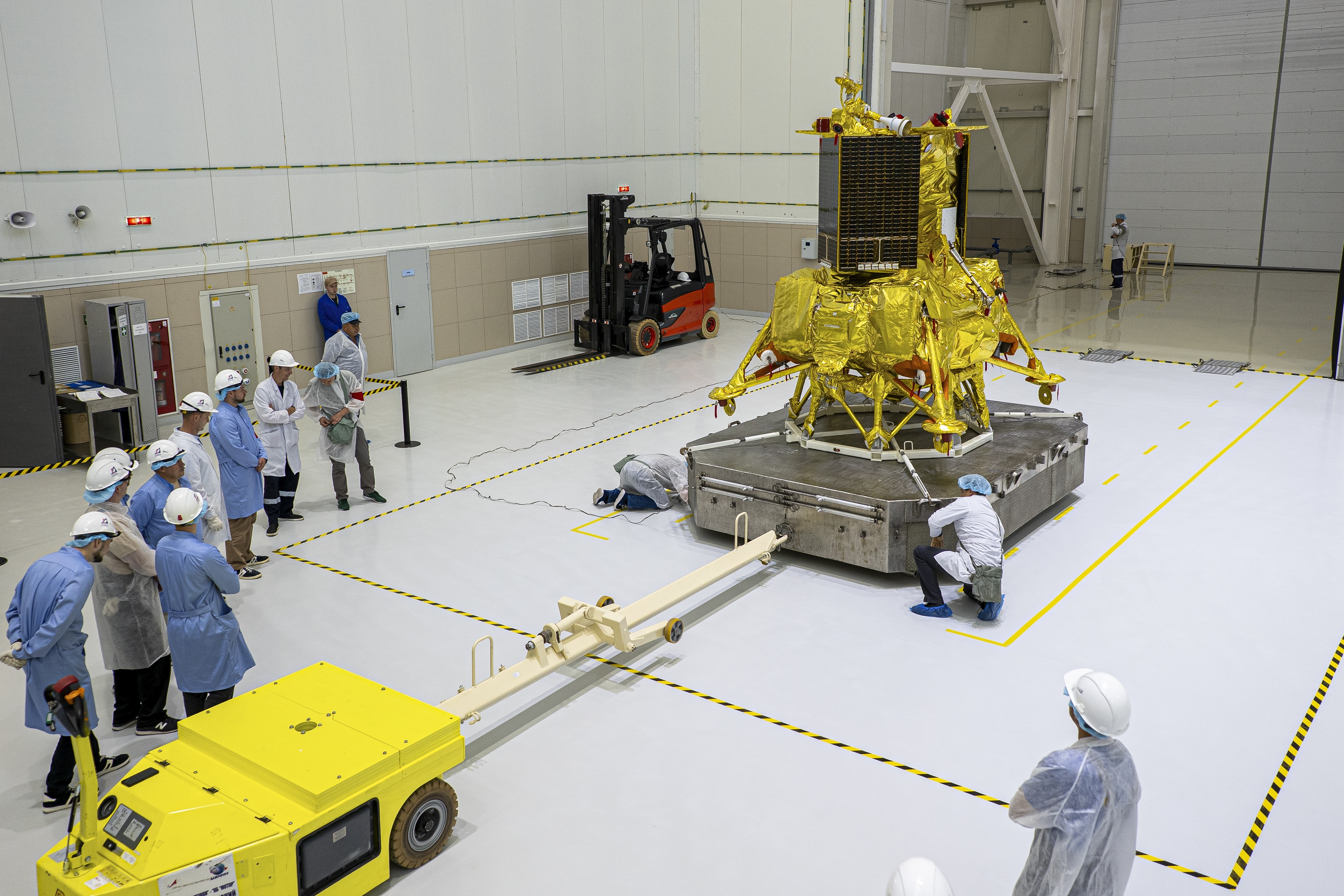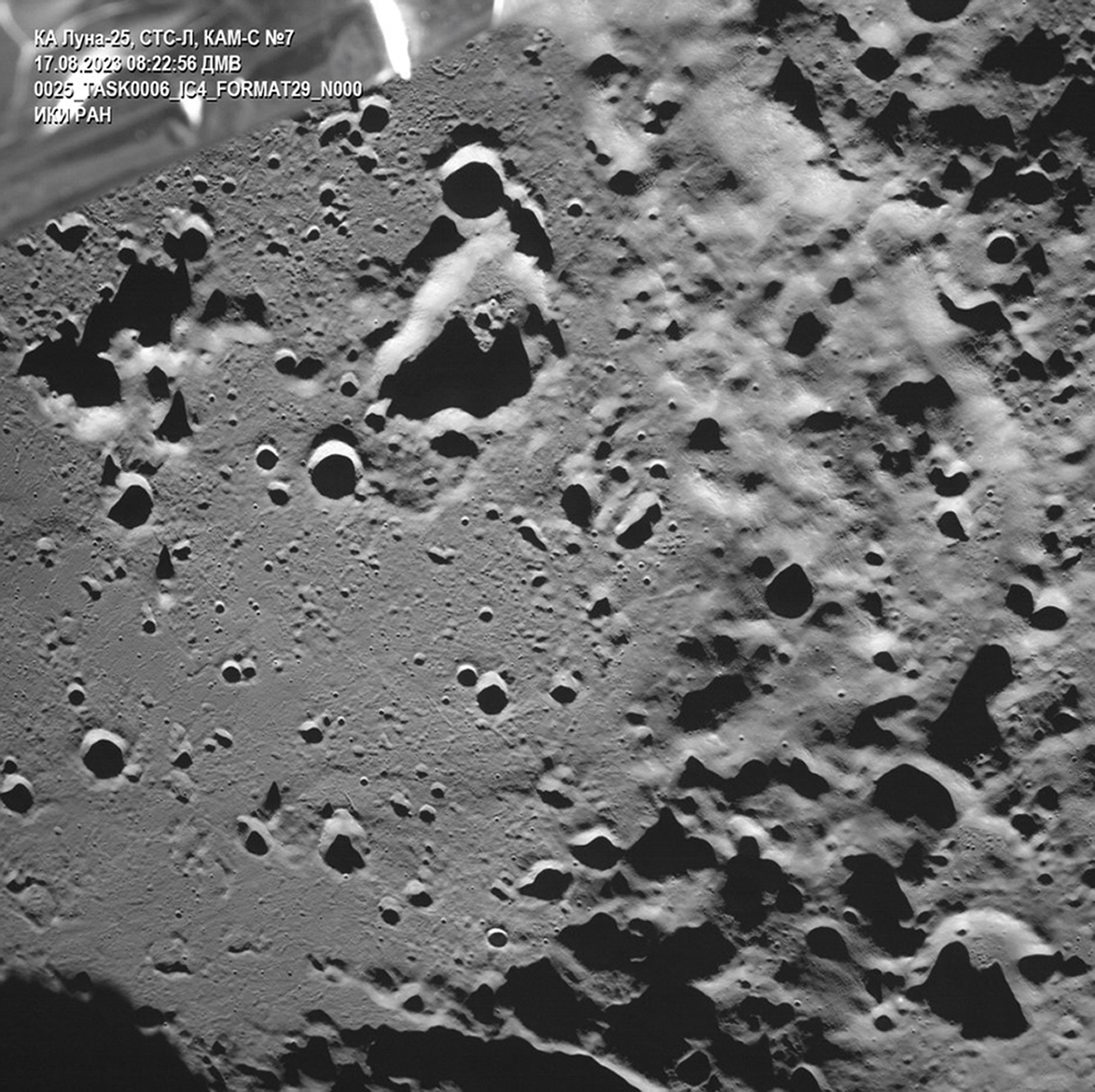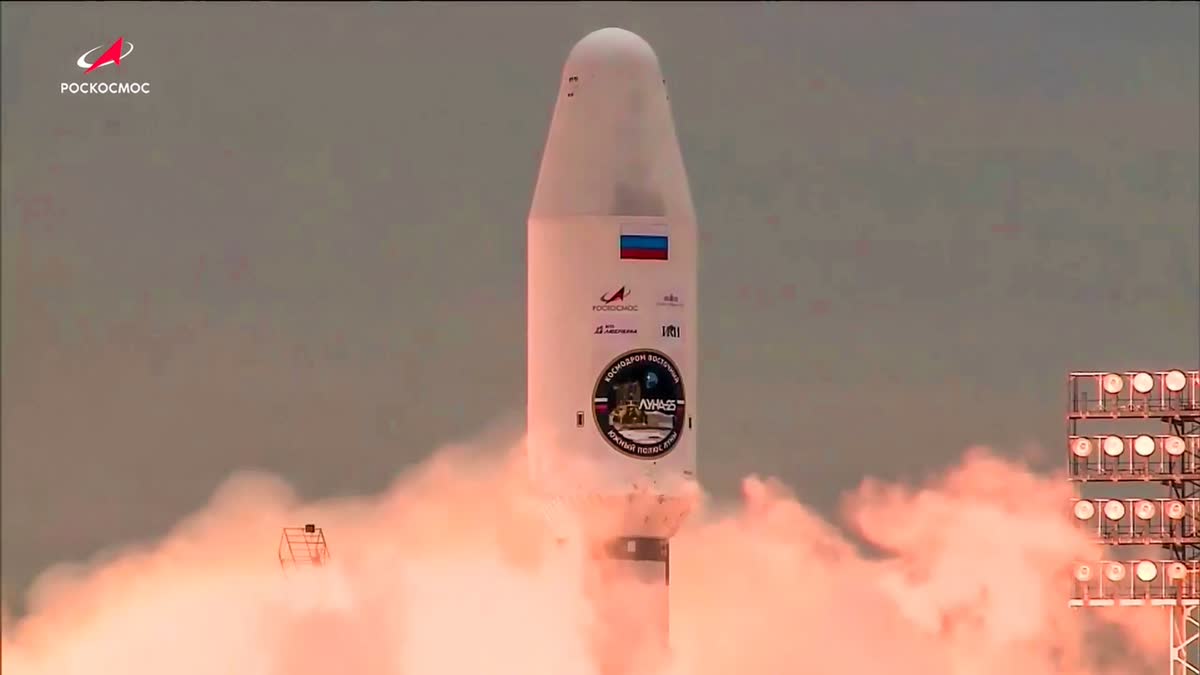Hyderabad: Russia's Luna-25 spacecraft crashed into the moon after it spun into an uncontrolled orbit, in its moon mission in almost 50 years. The country's Roscosmos space agency reported an "abnormal situation" as the reason behind the incident. This article will attempt to explain what happened.
The unmanned spacecraft operated from the Roscosmos command centre was aiming to be the first ever to land on the south pole of the moon. Scientists believe this could be an important area having reserves of frozen water and precious elements.
The space craft was expected to land Monday, Aug. 21, 2023, two days ahead of India's moon mission - Chandrayaan 3 which is expected to touch down at 6.04 pm on Wednesday, Aug. 23, 2023.
-
ISRO: Chandrayaan -3 mission is on schedule; system checks underway, smooth sailing on #Chandrayaan3Landing https://t.co/4A4mzYJALf
— ETV Bharat (@ETVBharatEng) August 22, 2023 " class="align-text-top noRightClick twitterSection" data="
">ISRO: Chandrayaan -3 mission is on schedule; system checks underway, smooth sailing on #Chandrayaan3Landing https://t.co/4A4mzYJALf
— ETV Bharat (@ETVBharatEng) August 22, 2023ISRO: Chandrayaan -3 mission is on schedule; system checks underway, smooth sailing on #Chandrayaan3Landing https://t.co/4A4mzYJALf
— ETV Bharat (@ETVBharatEng) August 22, 2023
According to Roscosmos, the command centre lost contact with the Luna-25 on Saturday after the spacecraft ran into difficulties and reported an “abnormal situation ”.
What is to be blamed? Russia's space agency chief blamed the failure of the engine to shut down leading to the crash of the Luna-25 spacecraft into the moon after its engines failed to shut down as programmed.
Roscosmos Director General Yury Borisov also blamed the country's decades-long pause in lunar exploration for the mishap.
-
Success of #Chandrayaan3 will make India global power: Former #ISRO scientist Manish Purohit #Chandrayaan3Landing #MoonLanding https://t.co/TGZbjDU0No
— ETV Bharat (@ETVBharatEng) August 22, 2023 " class="align-text-top noRightClick twitterSection" data="
">Success of #Chandrayaan3 will make India global power: Former #ISRO scientist Manish Purohit #Chandrayaan3Landing #MoonLanding https://t.co/TGZbjDU0No
— ETV Bharat (@ETVBharatEng) August 22, 2023Success of #Chandrayaan3 will make India global power: Former #ISRO scientist Manish Purohit #Chandrayaan3Landing #MoonLanding https://t.co/TGZbjDU0No
— ETV Bharat (@ETVBharatEng) August 22, 2023
The Luna - 25 spacecraft's engines were turned on over the weekend aimed at maneuvring it into a "pre-landing orbit". However, the engines did not shut down properly, plunging the lander onto the moon.
"Instead of the planned 84 seconds, it worked for 127 seconds. This was the main reason for the emergency," Borisov told Russian state news channel Russia 24.

When the spacecraft lost contact? Borisov said the Russian agency had contact with the spacecraft until 2.57 p.m. local time Saturday and the spacecraft went incommunicado thereafter. He said, "the device passed into an open lunar orbit and crashed into the surface of the moon."
The failed lunar mission was Russia's first since 1976. When Russia was part of the Soviet Union it launched Luna-24, which returned to Earth with lunar soil samples on Aug. 22, 1976. Only three countries have managed successful moon landings: the Soviet Union, the United States and China.
"The negative experience of interrupting the lunar program for almost 50 years is the main reason for the failures," Borisov said, adding "it would be the worst decision ever" for Russia to end the program now.
Where does Chandrayaan 3 come in? The Luna-25 was in a race with an Indian spacecraft - Chandrayaan-3 launched on July 14 - aimed at becoming the first to reach the south pole. While Luna 25 was expected to reach the moon on Aug. 21, the Indian lunar mission - Chandrayaan-3 is scheduled to touch down on Aug. 23.

Previously attempt by the Indian Space Research Organisation (ISRO) to land at the moon's south pole in 2019 ended when Chandrayaan - 2 crashed into the moon's surface.
Why Luna-25? Luna 25 was launched from the Vostochny Cosmodrome in Russia's Far East on Aug. 10. The spaceport is a pet project of Russian President Vladimir Putin and key to his efforts to make Russia a space superpower.
Prior to the launch, Roscosmos said the mission objective was to show Russia "is a state capable of delivering a payload to the moon," and "ensure Russia's guaranteed access to the moon's surface."
After the crash, the Russian space agency maintained that the moon mission was about ensuring long-term "defense capability" as well as "technological sovereignty."

"The race to develop the moon's natural resources has begun," Borisov said Monday. "In the future, the moon will become an ideal platform for the exploration of deep space."
Lack of Western tech- Sanctions were imposed on Russia after it it began its invasion over Ukraine nearly 18 months ago. The sanctions have affected Russia's space program, making it more difficult to access Western technology.
The Russian spacecraft was initially meant to carry a small moon rover. However, the idea was abandoned as means to reduce the weight of the craft for improved reliability, according to analysts.
Why south pole? The lunar south pole is of particular interest to scientists, who believe the permanently shadowed polar craters may contain frozen water in the rocks that future explorers could transform into air and rocket fuel. (with AP inputs)



